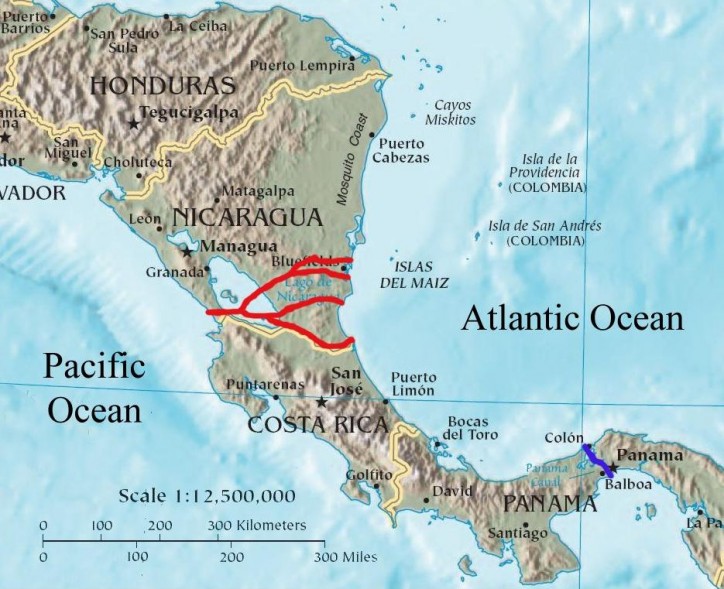At the end of 2014, the China-based infrastructure-development group, HKND Group, made an official announcement that it had initiated the building process of the Nicaragua Interoceanic Grand Canal. The project which has a total cost of $50 billion is aiming to offer a proper and more sufficient route for some of the largest barges in the world through the Americas to ports on the Pacific as well as the Atlantic Ocean. The canal is going have a total length of 172 miles and would require up to five years to be completed. It will manage to greatly rival the Panama Canal, which has a length of 51 miles and can only handle barges that are up to 13,000 TEUs. Once it is completed and fully operational, the Nicaragua Canal is expected to contribute for a spark in the annual economic growth by an initial estimate of approximately 10%.
The HKND Group has expressed its beliefs that the ever-increasing East-West trade volume along with the shift-up in vessel sizes completely justifies the carrying out of the Nicaragua Canal project, which will not only be able to accommodate the largest barges in the world, but will also offer the option of considerable fuel savings for ship operators that decide to use the canal. For example, as stated by the HKND Group, when regarding the distance from Shanghai to Baltimore the Nicaragua Canal route proves to be shorter than the Suez Canal and Cape of Good Hope by a hefty 4,000 km and 7,500 km respectively. This could potentially result in fuel cost savings of up to $1 million round trip.
Despite these immense benefits that the canal has to offer, an international consortium of environmental scientists have recently voiced their concerns regarding potential effects that the canal could have on Lake Cocibolca’s ecological health.

For the Nicaragua Canal to connect to both the Atlantic and Pacific oceans, it has to intersect Lake Cocibolca, which happens to be Central America’s main freshwater reservoir as well as the ninth biggest tropical freshwater lake of the Americas. It is also the home to some of the most fragile ecosystems in the whole region.
Among the top concerns of the scientists are accidental oil spillages from the 5,100 vessels that are going to pass through the canal per year, the extinction of plants and fish due to invasive species that are typically brought along by transoceanic vessels, as well as the long-term damages on aquatic life caused by frequent dredging operations.
The scientists also have several concerns that the project will have a large negative effect when regarding the supply of fresh water for drinking, irrigation and power generation purposes, as well as cause great harm to the currently flourishing ecotourism in Nicaragua.
On a brighter note, though, the scientists fully acknowledged the various benefits that are expected to come along with the Nicaragua Canal project, such as the creating of more new jobs and the generation of a significant amount of income that will help bring the nation out of its current extreme poverty state, but they did request, however, for Nicaragua to publicly outline a thorough assessment of the whole project that is to include both a cost-benefit analysis as well as consideration for the environment, among several other aspects.